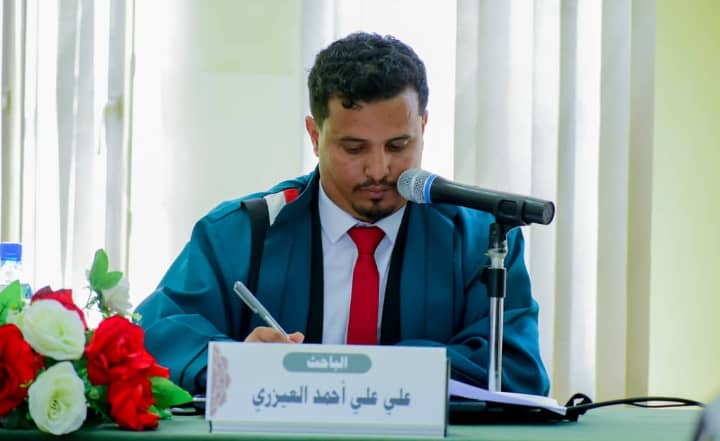When Translation Betrays the Text: How Errors Create Entirely New Meanings

Yemenat
Ali Ali Al-Aizari
Translation is far more than the mechanical act of converting words from one language to another; it is an intricate art that requires deep cultural and contextual understanding. While the primary aim is to preserve the original meaning, translation errors can sometimes result in unintended consequences, ones that reshape concepts and introduce entirely new interpretations never intended by the original author. These mistakes may result from a misinterpretation of context, an overly literal translation, or an inadequate understanding of linguistic and cultural nuances, all of which can be a recipe for disaster.
1. Translation Errors That Changed History:
Throughout history, mistranslations have played a role in shaping significant events. One of the most infamous examples is the mistranslation of Japan’s response during World War II. When the United States demanded Japan’s unconditional surrender, the Japanese Prime Minister used the word “Mokusatsu”, which can mean either “no comment” or “contempt” in Japanese. When it was mistakenly translated into English as “contempt,” the U.S. assumed Japan was rejecting negotiations, a misunderstanding that contributed to the decision to drop atomic bombs on “Hiroshima and Nagasaki”.
2. The Pitfalls of Literal Translation; The Invisible Enemy
Overly literal translations often produce unintended and, at times, absurd meanings. For example, directly translating the English phrase “It’s raining cats and dogs” into Arabic would make no sense, as the intended meaning is “heavy rainfall,” not animals falling from the sky. Similarly, the phrase “Lost in translation”, when translated word-for-word into other languages, fails to capture its intended nuance, which refers to the inability to convey meaning accurately across linguistic boundaries. In business, mistranslations have led to branding disasters. A well-known example is Pepsi’s slogan, “Come Alive with the Pepsi Generation,” which was mistranslated into Chinese as “Pepsi brings your ancestors back from the dead.” The unintended phrase caused confusion and amusement among Chinese consumers, demonstrating the importance of linguistic precision in marketing.
3. The Impact of Translation Errors on Literature and Film:
Translation errors can also significantly affect literature and cinema. A notable instance is the translation of Russian author Dostoevsky’s works, where certain English translations altered complex philosophical ideas, making it difficult for readers to grasp his original intent. Additionally, film titles and dialogue have suffered from poor translations, altering the audience’s perception of the movie. One famous case is “Eternal Sunshine of the Spotless Mind,” whose title was translated differently across languages, sometimes making it seem like a lighthearted comedy rather than the deep, philosophical narrative intended by the filmmakers.
4. When Translation Redefines Cultural Perception:
Translation has the power to shape and even transform cultural understanding. Words like “Freedom” and “Respect” may seem straightforward, but their translations carry varying connotations across societies. For instance, “Freedom” is typically translated as “حرية” in Arabic, yet in different political contexts, it can imply independence, personal liberty, or even rebellion. Likewise, “Respect” is rendered as “احترام,” but in some cultures, it encompasses not only politeness but also deep-seated obedience and social hierarchy.
5. When Betrayal Becomes an Act of Creativity:
In the realm of translation, there is a saying: “Translation is a beautiful betrayal.” It reflects a paradox at the heart of the translator’s craft, true fidelity to a text often requires sacrificing something in the process, whether it’s cultural nuance, rhythm, or tone. Yet, when this so-called “betrayal” is undertaken with intention and artistry, it can give rise to something wholly original.
A striking example lies in the Arabic translations of “Saadi Youssef”, particularly his renditions of Lorca’s poetry. Rather than cling to literal meaning, Youssef used the full force of his poetic sensibility to breathe new life into Lorca’s voice, reshaping it in a way that resonated with Arabic readers while preserving its soul. Likewise, “Guy Deutscher’s” English interpretations of Al-Mutanabbi demonstrate that straying from the original meter can be a brave and respectful choice in service of deeper meaning and poetic power.
Consider also “The Little Prince”, whose many translations differ subtly yet significantly. Each version reflects the translator’s vision, sometimes enriching the text in ways the original never imagined—proof that a faithful betrayal can unlock new dimensions. Here, betrayal is not failure. It is creativity in motion, an act of interpretation that transforms the translator into a co-creator of art. Sometimes, to honor a voice, we must dare to reinvent it.
In brief, translation errors do not always result in failures; sometimes, they lead to new meanings and unexpected cultural insights. However, the art of translation demands more than linguistic accuracy, it requires sensitivity to context and a keen awareness of how words resonate across cultures. Whether in diplomacy, literature, business, or everyday communication, translators must not only convey words but also capture the essence and intention behind them.

